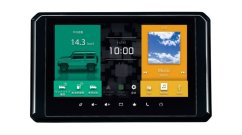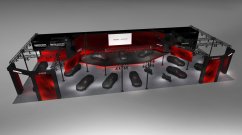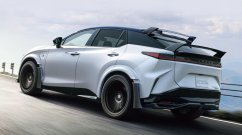When selecting a car battery, you might come across the term "DIN." But what exactly does DIN mean, and why is it important? In this article, we will delve into the significance of DIN in car batteries, exploring its origins, standards, and its impact on your vehicle’s performance.
What is DIN?
DIN stands for "Deutsches Institut für Normung," which translates to the German Institute for Standardization. Established in 1917, DIN is a respected organization responsible for developing and maintaining a wide range of standards in various industries, including automotive. These standards ensure that products are consistent, reliable, and compatible across different manufacturers and applications.
Also read: Things to Keep in Mind While Buying a Used Car
In the context of car batteries, DIN standards specify the dimensions, terminal types, and performance characteristics. This means that a DIN-standard battery will fit properly in the designated space within the vehicle and meet the necessary electrical specifications to operate efficiently.
The Importance of DIN Standards in Car Batteries
- Compatibility and Fitment: One of the primary reasons DIN standards are crucial is compatibility. Car manufacturers design battery compartments to fit specific dimensions, ensuring secure installation and reliable performance. DIN-standard batteries adhere to these dimensions, making it easier to find a battery that fits your vehicle perfectly. This eliminates the guesswork and potential issues that can arise from using a battery that is too large or too small.
- Performance and Reliability: DIN standards also encompass performance criteria, including cold cranking amps (CCA) and reserve capacity (RC). CCA measures the battery’s ability to start an engine in cold temperatures, while RC indicates how long the battery can power the vehicle's electrical system if the alternator fails. By adhering to DIN standards, manufacturers ensure that their batteries deliver consistent performance and reliability, crucial for modern vehicles with numerous electrical components.
- Safety: Safety is another critical aspect governed by DIN standards. Properly sized and rated batteries reduce the risk of electrical malfunctions, overheating, and other issues that can arise from using an incompatible battery. DIN standards also cover the construction and materials used in batteries, ensuring they meet stringent safety requirements.
Types of DIN Car Batteries
DIN car batteries come in various types, each designed to meet specific needs and applications. Some common types include:
- Flooded Lead-Acid Batteries: These are the most traditional and widely used car batteries. They consist of lead plates submerged in an electrolyte solution of sulfuric acid and water. Flooded lead-acid batteries are cost-effective and provide reliable performance, making them a popular choice for many vehicles.
- Absorbent Glass Mat (AGM) Batteries: AGM batteries use a special glass mat to absorb the electrolyte, preventing spills and leaks. They are known for their durability, longer lifespan, and better performance in extreme temperatures. AGM batteries are commonly used in modern vehicles with advanced electrical systems and start-stop technology.
- Gel Batteries: Gel batteries use a thickened electrolyte, reducing the risk of spills and leaks. They offer excellent resistance to vibration and are suitable for vehicles that require deep cycling capabilities, such as off-road vehicles and recreational vehicles (RVs).
Choosing the Right DIN Battery for Your Vehicle
When selecting a DIN battery for your vehicle, several factors should be considered:
- Vehicle Specifications: Consult your vehicle’s manual to determine the recommended battery specifications, including dimensions, CCA, and RC. This information will guide you in selecting a compatible DIN battery that meets your vehicle's requirements.
- Driving Conditions: Consider the typical driving conditions your vehicle will encounter. If you live in a region with extreme temperatures, opt for a battery with higher CCA to ensure reliable starts in cold weather. For vehicles with numerous electrical accessories, choose a battery with a higher RC.
- Battery Maintenance: Depending on your preference and maintenance capabilities, choose between maintenance-free options like AGM and gel batteries or traditional flooded lead-acid batteries that may require periodic maintenance.
Conclusion
Understanding what DIN means in car batteries is crucial for making an informed decision when it comes to replacing or upgrading your vehicle's battery. DIN standards ensure compatibility, performance, and safety, providing peace of mind and reliable performance. By choosing a DIN-standard battery that meets your vehicle’s specifications and driving conditions, you can ensure your car operates smoothly and efficiently.
Also read: Top 5 Android Auto Features That Enhance Your Driving Experience
Whether you’re a car enthusiast or simply a responsible vehicle owner, knowing the significance of DIN in car batteries will help you make better choices, ensuring your vehicle remains in optimal condition. So next time you’re in the market for a new car battery, remember to look for the DIN standard – it’s a mark of quality and reliability that you can trust.












